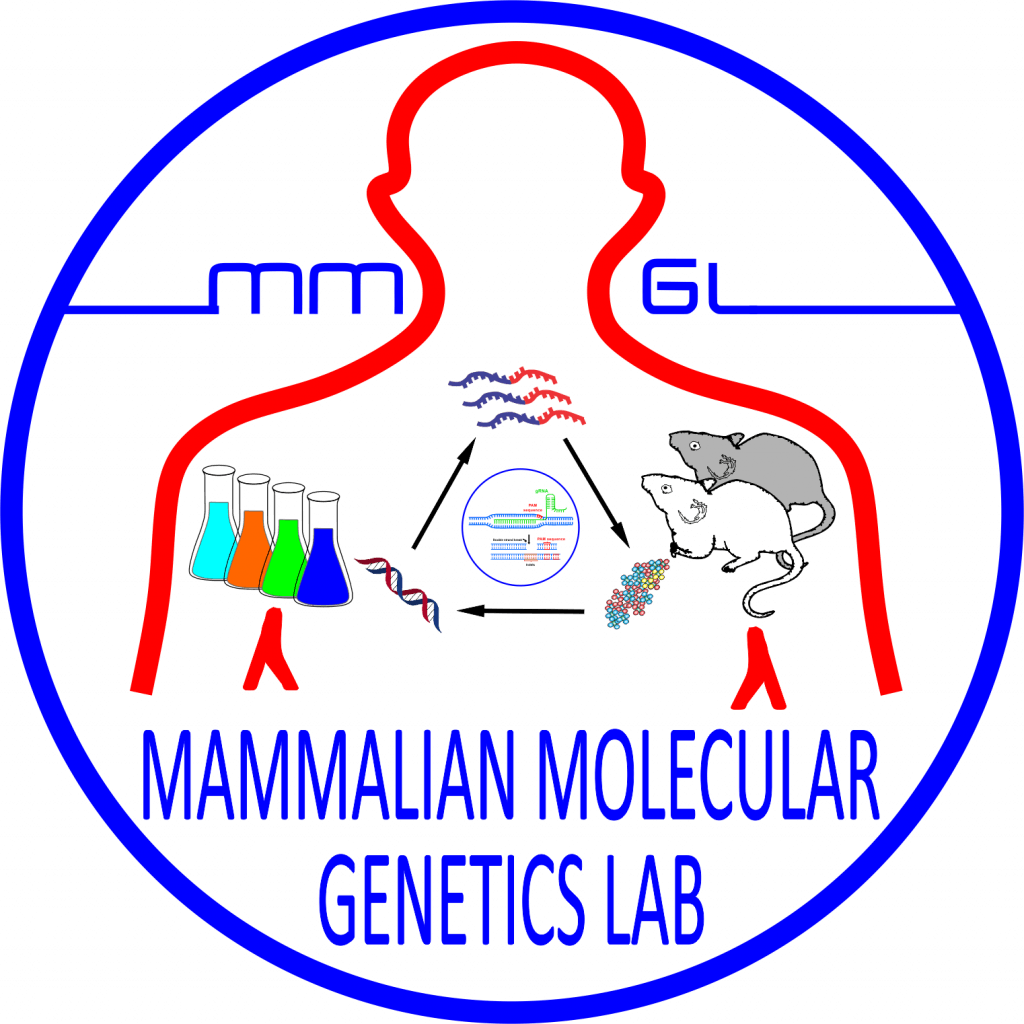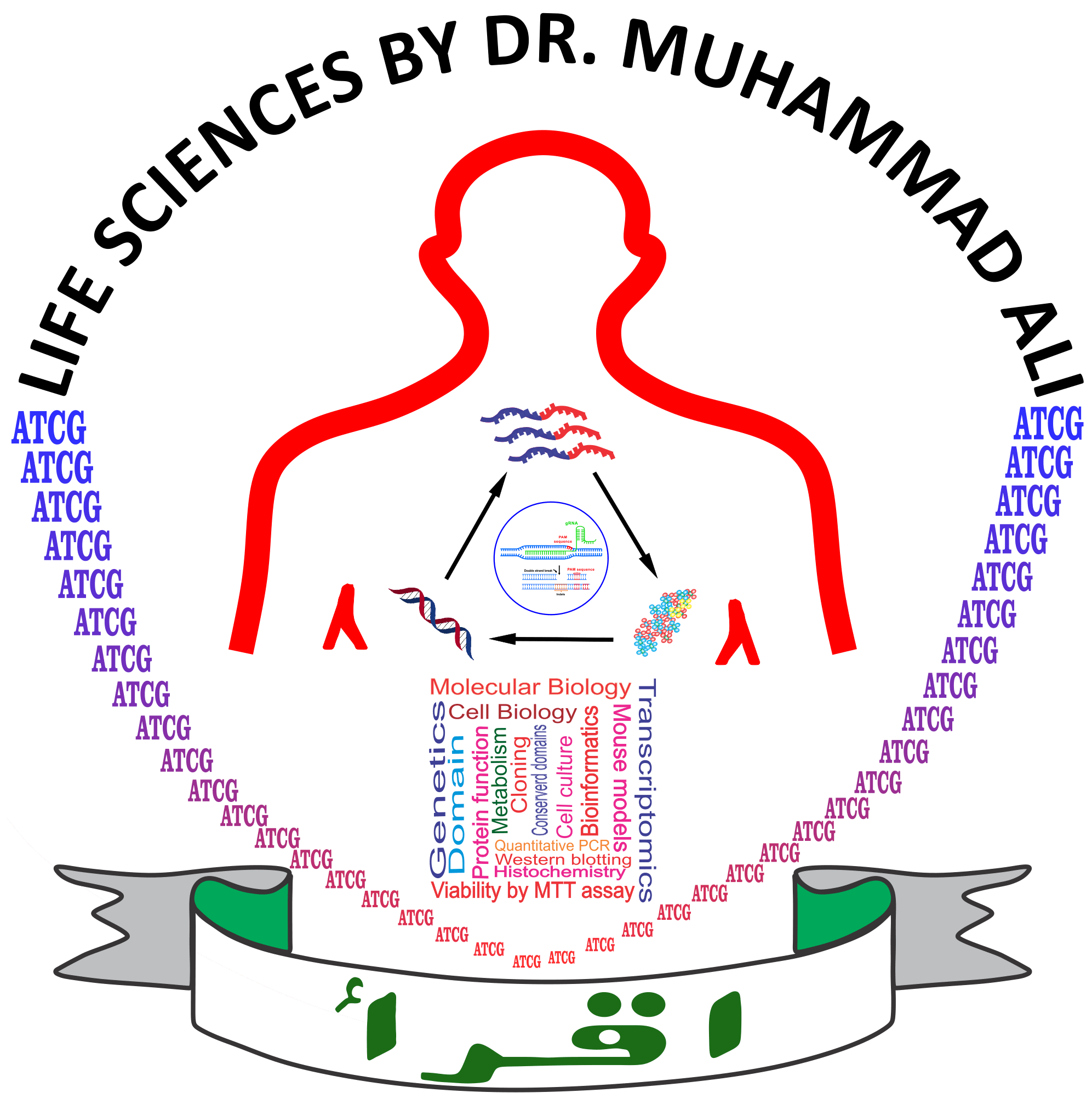
We are running Mammalian Molecular Genetics Lab (MMGL). We have diverse research interests and research expertise.
Research Interests of MMGL
Biochemistry, molecular and cell biology:
- Viability of cells under the regulation of mTORC1 (PI3K-AKT-mTORC1 signaling axis)
- Cancer cell survival in relation to autophagy (TERT-mTORC1-S6K signaling axis)
- Molecular signalling of breast cancer cells (RAS-RAF-MEK-ERK sinaling axis)
- Role of Autophagy and mitophagy in diabetes and its signalling pathways
- Functional studies of PI3K-AKT-mTOR signaling pathway and its implication to liver cancer
- The role of TERT in the inhibition of mTORC1 that relieves liver cancer cells from ER stress
- The role of EI24 in breast cancer through the inhibition of MAPK/ERK pathway
- The role of TRAF6 in the activation of MAPK/ERK signaling in breast cancer
- CRISPR/Cas9-facilitated genome editing in cancer cell lines and mice
- Generation of conventional & conditional transgenic and knockout mice for human disease models
- Testing of natural bioactive compounds against type II diabetes
- Testing of natural bioactive compounds against liver injury
- Testing of natural bioactive compounds against dengue disease
- Solving signalling pathway for fatty liver disease
- Pathway finding by in-silico analysis (correlation of gene signature)
Biotechnology/Bioinformatics:
- In-silico study to find pathways leading to oncogenesis by using online cancer database
- Study of HCC and breast cancer using mouse models and human samples
- Pyramiding of disease related genes in mouse lines
- Adulteration testing of Super Basmati, using molecular markers for specific DNA loci, for the export of Basmati Rice to European countries
- Molecular marker-facilitated pyramiding of bacterial blight resistance genes in Super Basmati rice (Our rice advanced line BR1 got the top position and showed the highest yield in National Uniform Rice Yield Trial 2013)
- Identification and mapping of bacterial blight resistance genes form Pakistani rice verities
- Genetic diversity assessment of Pakistani Basmati landraces and Basmati breeding lines using DNA-based SSR and RAPD analysis
Bio-analytical chemistry:
- Extraction and activity guided the evaluation of natural antioxidant extracts from indigenous plant sources (separation, identification, and quantification)
- Extraction of essential oils of herbal and medicinal importance by various classical and non-classical methods and their characterization
- Antioxidant and antimicrobial activities of extracts from the indigenous plant
- Analytical approach to characterize polysaccharides of the range of 1E6 g/mole to 100E6 g/mole for surgical applications using field flow fractionation and laser light scattering approach
- Flow-Field flow fractionation/laser light scattering analysis for the blends of polysaccharides for medical applications
- In-vitro studies for the interaction of sodium hyaluronate with most abundant proteins (human serum albumin and ovalbumin)
- Antioxidant, autophagy, and cell death analysis of cancer cells when provided with unsaturated fatty acids and steroids
Expertise of scientific techniques
Molecular biology techniques:
- Polymerase chain reaction (primers designing for genotyping, cloning, mutation )
- Site directed mutagenesis, insertion, deletion (molecular cloning)
- Gene isolation and gene expression studies
- Molecular cloning to express specific proteins in cancer cell lines and mice
- DNA extraction and Southern blotting to check mutations in GEM
- RNA extraction and Northern blotting to observe transcript size and expression
- cDNA synthesis and quantitative PCR for gene expression studies
- Protein extraction, SDS-PAGE and Western blotting for cell signaling studies
- Competent cells making, transformation, preservation, colony PCR, and plasmid extraction
- Interaction and localization of proteins by Co-IP and Western blotting
- Protein extraction for functional study of their domain and their interactions
- Functional modulation of enzymes by mutations in specific amino acids and domains
- cDNA synthesis and its cloning in expression plasmids
- Design and making gene knockdown and knockout system using siRNA/shRNA and CRISPR/Cas9 respectively
- Invitro synthesis of guided RNA to use in CRISPR/Cas9 system
- Pyramiding of genes in the mouse for cell signaling study in-vivo
- PCR (RAPD) based genetic diversity study among members of same species
- Proximate analysis of plant samples for nutrient values
- Antioxidant and antimicrobial activities of crude extracts for food chemistry purpose
Cell biology and cellular phenotype studies (In-vitro):
- The cell culture of all kinds of cell lines including primary, cancer, and embryonic stem cells
- CRISPR/Cas9-mediated genetic changes in cell lines for the functional studies of enzymes and proteins
- A lentiviral system to knockdown/knockout genes from cell lines and mice for the functional study of proteins in-vivo
- Stable cell line generation by lentivirus-mediated gene knockdown
- FACS analysis for apoptosis, autophagy induction, and stable cell line making
- Immunocytochemistry to detect protein localization and interaction
- MTT assay to check the viability of cells
- Colony formation assays to check the oncogenic potential of proteins in cancer cell lines.
- Oil-Red-O staining to check lipid accumulation that leads to inflammation in the liver
In-vivo studies using mouse models:
- Mouse necropsy and organ collection for in-vivo studies
- RNA, DNA, and protein extraction and then expression test in different organs of mice
- Histochemistry analysis to check tissue morphology
- DEN-mediated carcinogenesis for the study of liver cancer
- Generation of tissue and organ-specific KO and transgenic mice
Bioinformatics techniques:
- NCBI primer blast link for designing primers for genotyping and cloning
- DNA and protein homology using NCBI link, Muscle link, Cluster W link, T-coffee link
- Oncomine for the expression of genes in cancer tissues link
- Snap-Gene for cloning, genotyping, alignment, and map construction link
- Molecular Signatures Database for GSEA link
- Pathway finding by In-silico analysis (cBioPortal and Oncomine) link
- Analysis of diversity among different members of a species using dendogram (Omega 6)

Comments are closed.